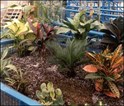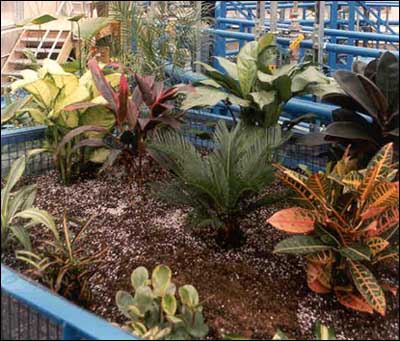Resort's Wastewater Treatment Plant Accelerates Natural Processes to Produce High Quality Effluent

Given the name Living Machine by its developer, the process treats wastewater by applying concepts based on engineered ecological systems that include microbes, plants, snails and insects. In this case, the facility has been able to provide the additional wastewater treatment capacity needed by the resort for its expansion plans that involved the construction of new residential and commercial buildings.
"To expand this resort, which is not connected to a municipal wastewater system, we needed to find a way to deal with additional waste," said Mark Delaney, vice president of the resort complex. He went on to describe how the new facility gave management the treatment capacity needed to complete construction of a condominium project that was underway, construct other new condominium units, and build a base lodge facility for a ski lift and trail network.
Old Facility Retrofitted with New System
To install this new wastewater handling system, the supplier, Living Technologies of Burlington, Vermont, converted a conventional package treatment facility that had been sitting unused at the resort for 15 years. The resort had replaced the original system incorporating the package plant with a low-maintenance arrangement of primary and secondary lagoons that are still in use. These lagoons, however, occupied acres of valuable space on the property and could not be expanded without adversely affecting nearby guest facilities.
The compact Living Machine is set up in a concentric configuration with a central clarifier and an outer annular tank around it. This outer chamber is divided into anaerobic, anoxic, aerobic, and sludge-holding compartments for different plants to thrive and break down biological waste products in the influent stream. The planted aerobic reactors are covered by tropical, sub-tropical and native plants including iris, willows, bluebells, calla lillies, and monkey flowers, all of which contribute to the treatment process.
Housed in a greenhouse-like building that replaced a dilapidated wood structure covering the old package treatment plant, the entire process is under cover. Also, odor-producing compounds are removed by the reactions in the process, so no undesirable odors are released to the atmosphere. As Smugglers' Notch President Bob Mulcahy commented, "You can walk through it and think you're in a regular greenhouse."

Educational programs, including summer camps for the children of families visiting the resort, are regular activities offered to guests. Future programs will include tours of the new facility to show how sanitary wastewater can be treated and disposed of efficiently in an environmentally acceptable manner.
Process Produces High Quality Effluent with Nature's Help
The retrofitted facility at this Vermont site does not include an effluent polishing step after the wastewater is treated in the clarifier. This feature normally is part of the Living Machine system. Instead, the effluent from the unit installed at the ski resort is pumped to the old lagoons for second-stage polishing before it is piped to a nearby 70-acre area where it is used for spray irrigation.
The BOD values for the influent stream average around 300 mg/l, and are reduced to less than 20 mg/l at the discharge. Initial total suspended solids measure about 250 mg/l, and exit the system at less than 20 mg/l. De-nitrification is accomplished through a natural process, and the effluent total nitrogen is expected to be less than 10 mg/l, although currently no effluent requirements have to be met for nitrogen.
The manufacturer describes the product as on-site wastewater treatment system that incorporates and accelerates natural processes to purify water. With the help of sunlight and a managed environment, a diversity of organisms including bacteria, plants, zoo-plankton, and other invertebrates, break down and digest other organic substances that are considered pollutants. Depending on the climate, the systems can be housed in a protective greenhouses, under light shelter or in the open air.
With effluent polishing, they can produce a high quality effluent suitable for re-use or for disposal through several alternative methods, a feature that is particularly advantageous for small communities unable to connect to conventional municipal wastewater treatment systems or where water is scarce. So far the supplier has installed over 20 commercial-scale facilities of this type in six countries, ranging in size from 4,000 to 1,000,000 gallons per day.
For more information contact Living Technologies, Inc. at phone 802-865-4460; fax 802-865-4438; or e-mail: info@livingtechnologies.com.
Edited by Ian Lisk, Editor Emeritus, Water Online
